
Languedoc Roussillon in southern France is a diverse wine-producing region, with a long and rich history of winemaking that dates back to Roman times, along with varied terroirs, and a wide range of grape varieties.
Languedoc-Roussillon, once known primarily for its inexpensive bulk wine production, has now become synonymous with quality winemaking using modern, environmentally-sustainable wine production methods, thanks to the emergence of a new generation of winemakers in the late 20th century who wanted to reinvent and revitalize winemaking in the region.
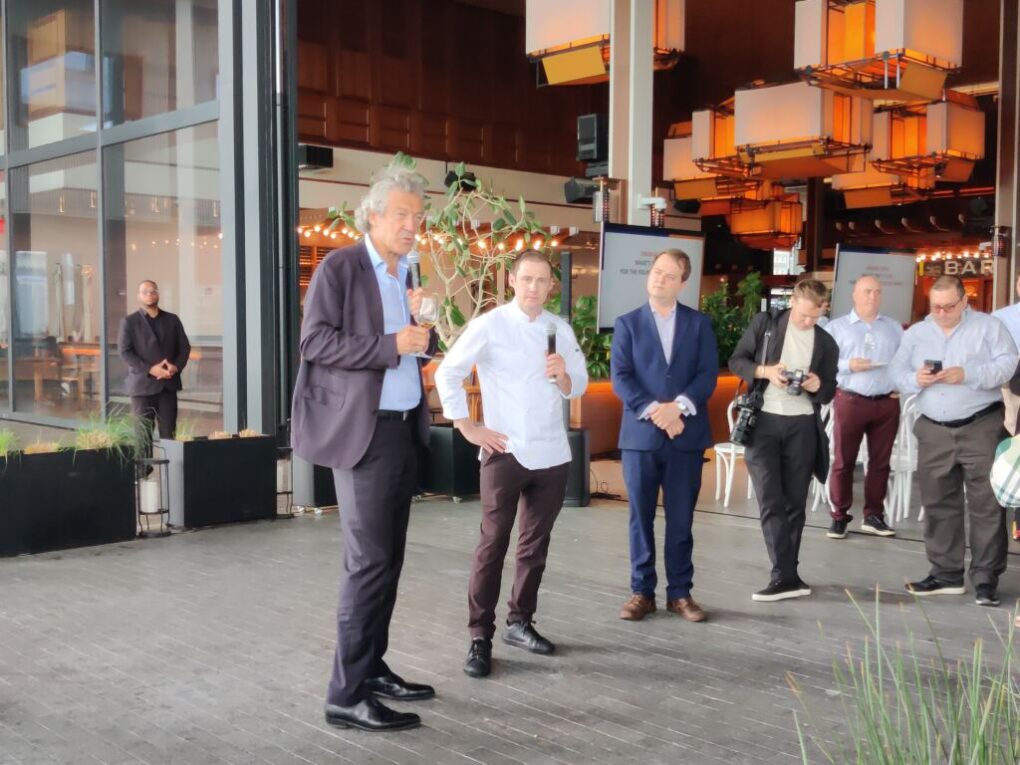
Gerard Bertrand is one of the region’s most prominent and influential winemakers. Born into a winemaking family in 1965, Bertrand inherited his father’s vineyards, and embarked on a mission to elevate the wines of the region to new heights. He is recognized as a pioneer in biodynamic, organic, and sustainable winemaking in the region, as well as for producing wines that are expressive of the region’s unique terroir.
Gerard Bertrand winery is situated in the heart of Languedoc-Roussillon, with its main estate located in the village of Narbonne. The winery owns vineyards across the region, spanning a wide array of terroirs, including the Corbières, Minervois, La Clape, and Coteaux du Languedoc appellations.
Gerard Bertrand’s philosophy revolves around the concept of “winegrower-wine” or “terroir-wine.” His wines reflect the characteristics of the land, climate, vineyards, and varietals from which they are produced. The winery produces a diverse range of wines, from entry-level offerings, to premium cuvées. Gerard Bertrand is known for his expertise in working with both traditional Languedoc-Roussillon grape varieties, such as Syrah, Grenache, and Carignan, as well as international varieties like Cabernet Sauvignon, Merlot, and Chardonnay. He also experiments with lesser-known local grape varieties, including reviving ancient and nearly forgotten varietals.
Gerard Bertrand’s portfolio includes red, white, orange, and rosé wines, reflecting the region’s Mediterranean climate and diverse terroirs. The wines are known for their authenticity, fruit-forward flavors, and a sense of place. Bertrand’s commitment to organic and biodynamic farming has also resulted in wines that express a sense of purity and respect for the environment. This year, Gerard, who was recently elected Master Winemaker of the Year,” decided to add two more orange wines to his eclectic and ever-growing portfolio.
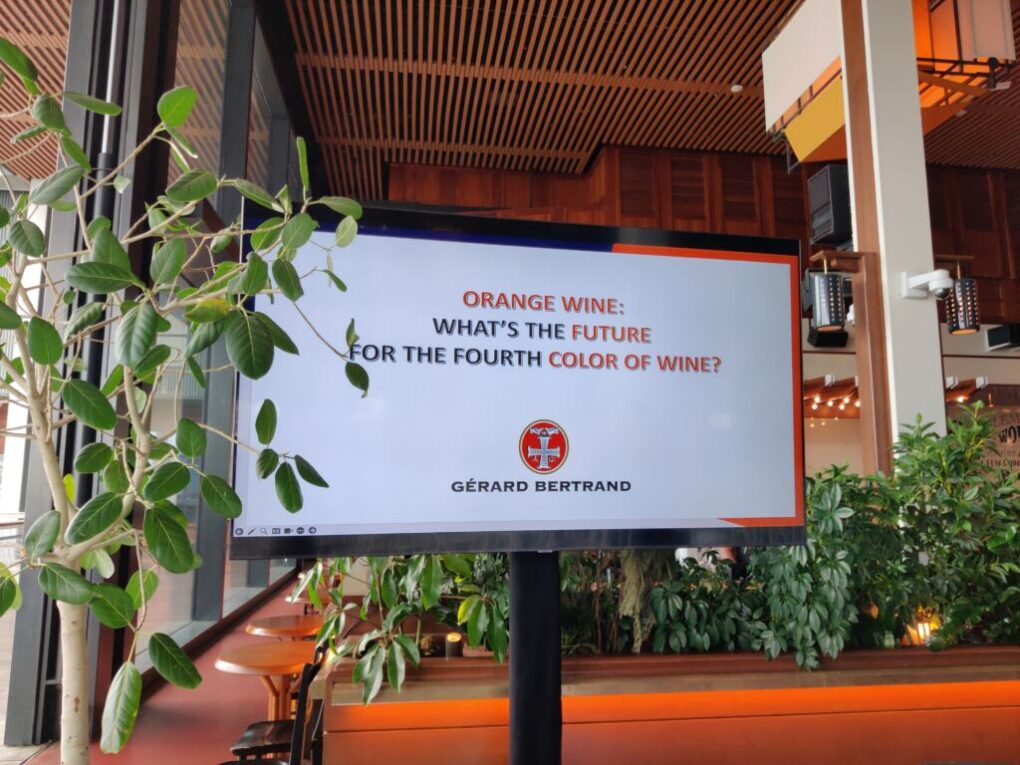
Orange wine, sometimes referred to as “the fourth color of wine,” is made from the juice of white varietals that have been left in contact with their skins (also known as maceration or “on the lees”) for weeks as opposed to a few to several days. The deep golden, or orange hue of these wines that result from this prolonged skin contact is what distinguishes them from white wines.
Orange wines have existed for over 8000 years in one form or another. Evidence of orange wine production was first found in Caucasus, and the process of fermenting grapes whole has been practiced in the country of Georgia for over 4300 years.
The Gerard Bertrand line of environmentally-friendly and sustainably produced biodynamic and organic orange wines merges the ancient orange winemaking tradition established in Georgia, with flavor profiles that reflect the unique terroir and grapes of the Languedoc Roussillon.
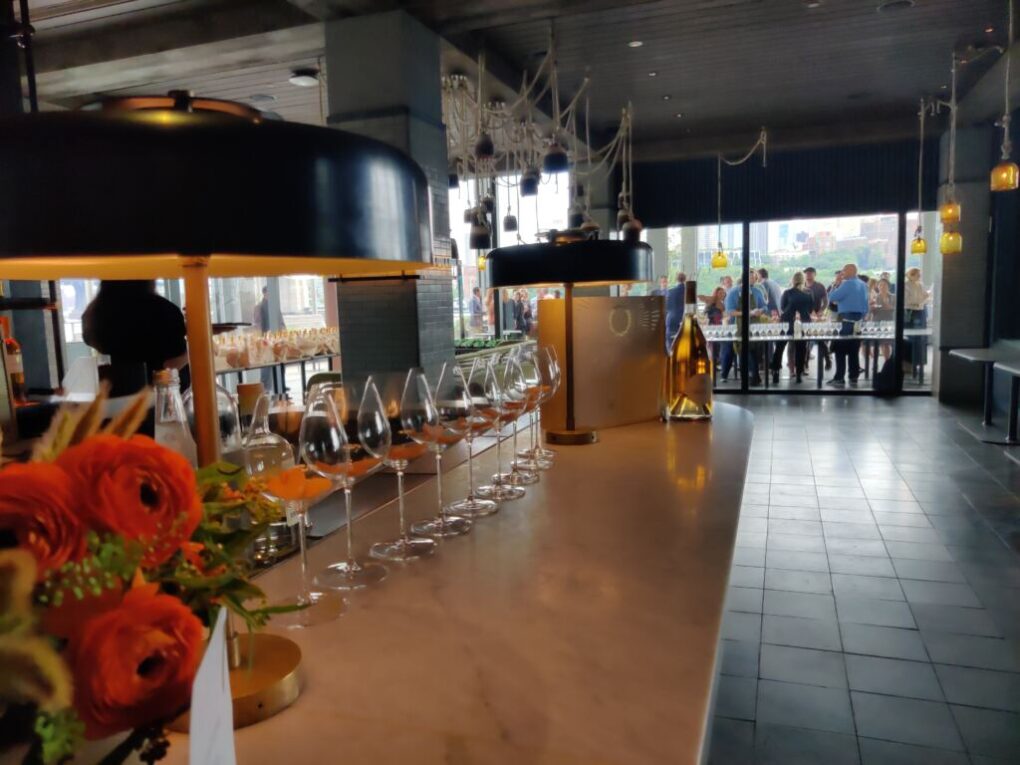
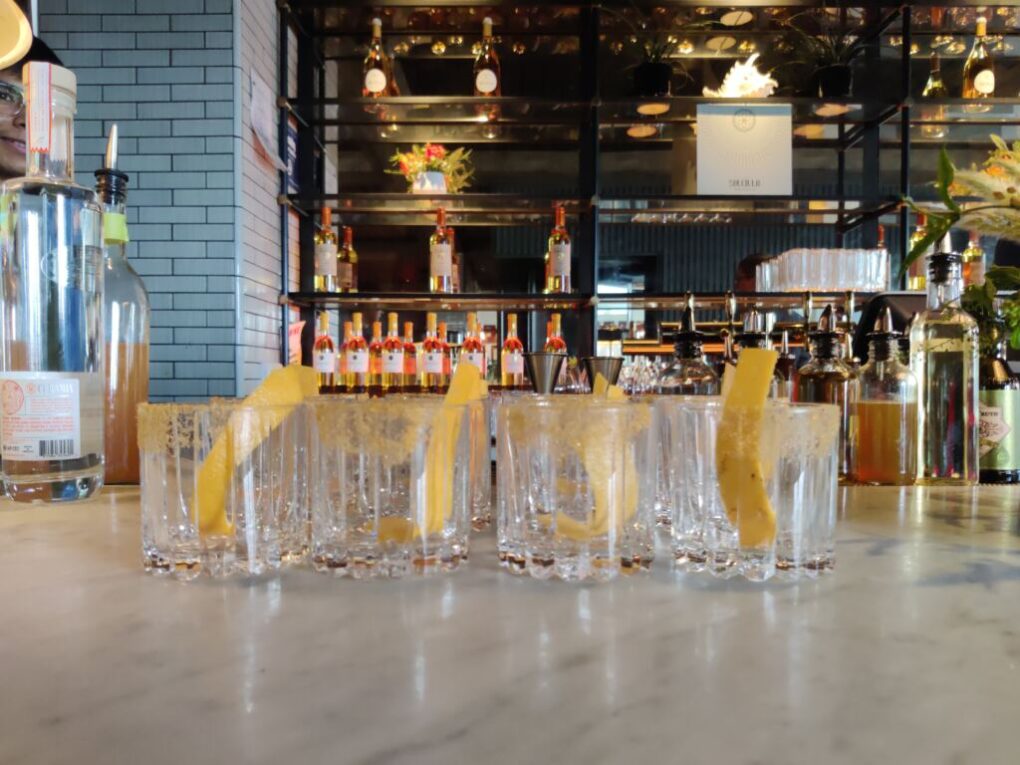
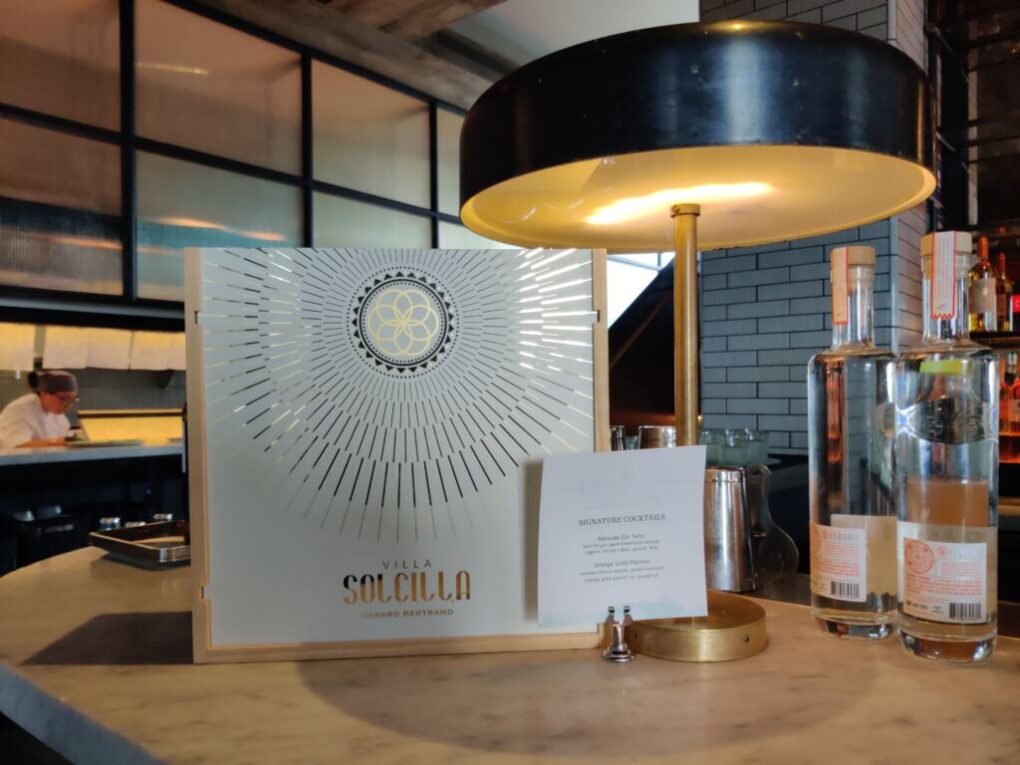
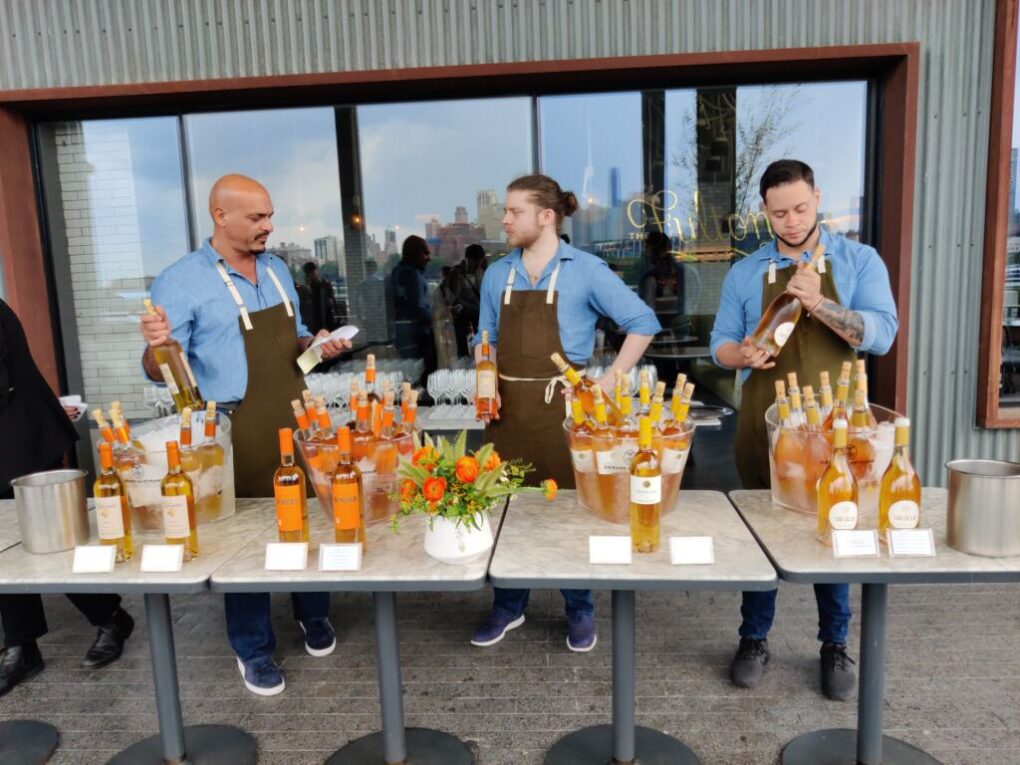
Gerard showcased his portfolio of orange wines at The Fulton by Jean-Georges, in New York City’s South Street Seaport. These wines were paired with a diverse range of small bites that demonstrated the adaptability of these wines to an eclectic array of foods.
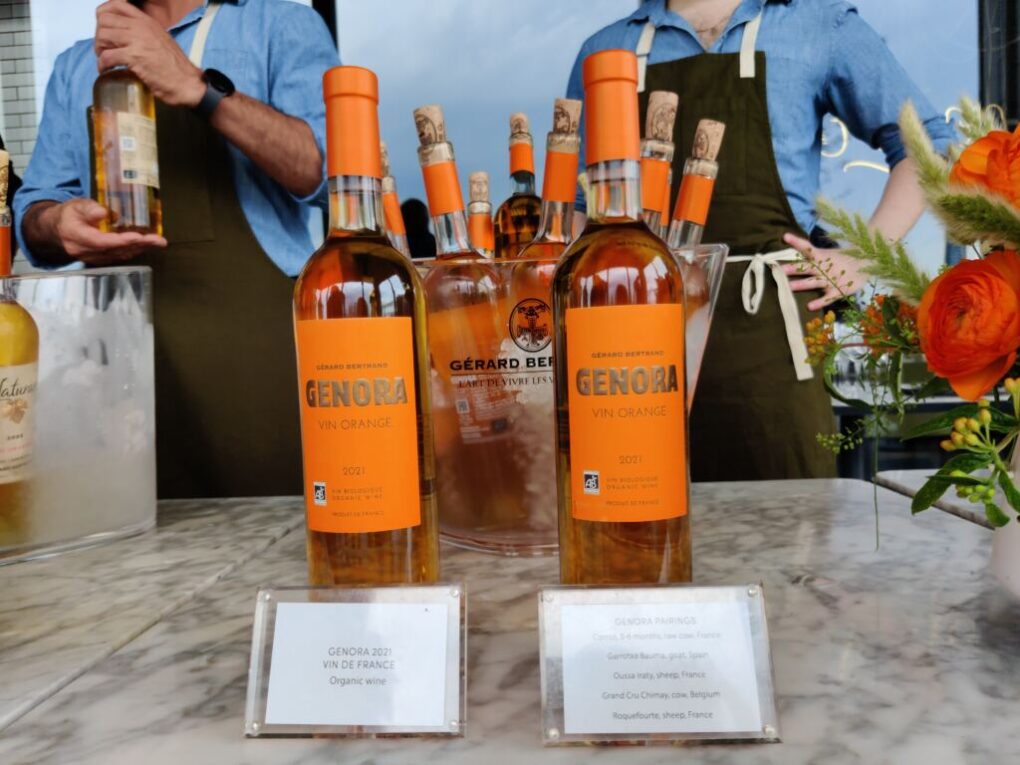

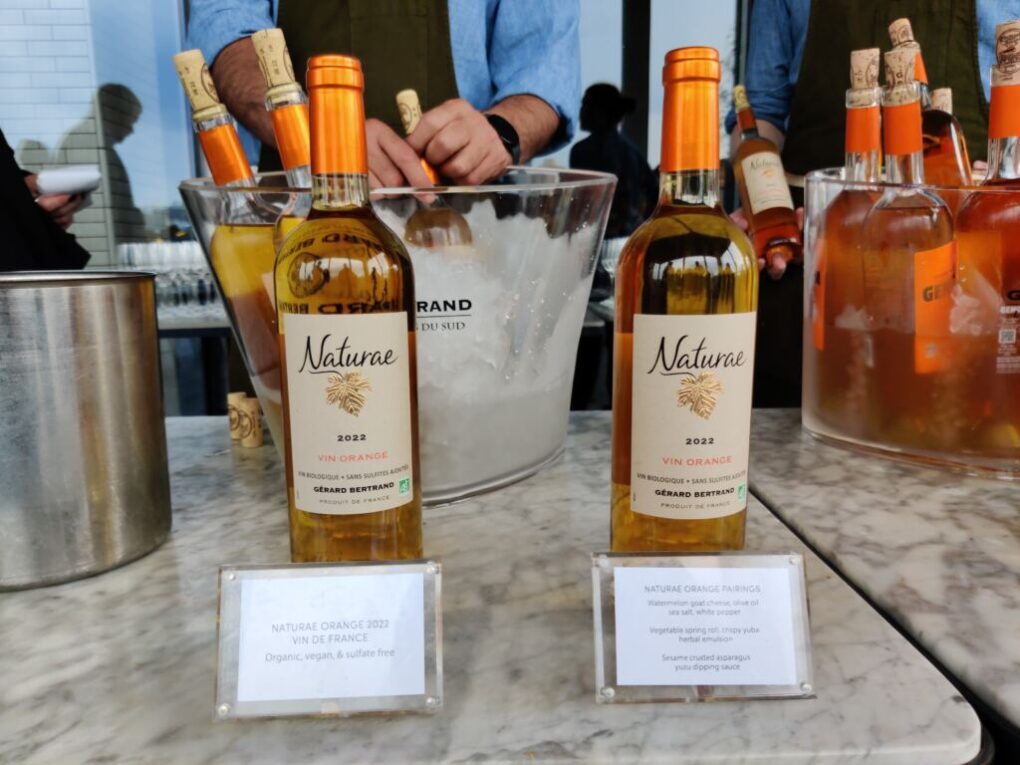
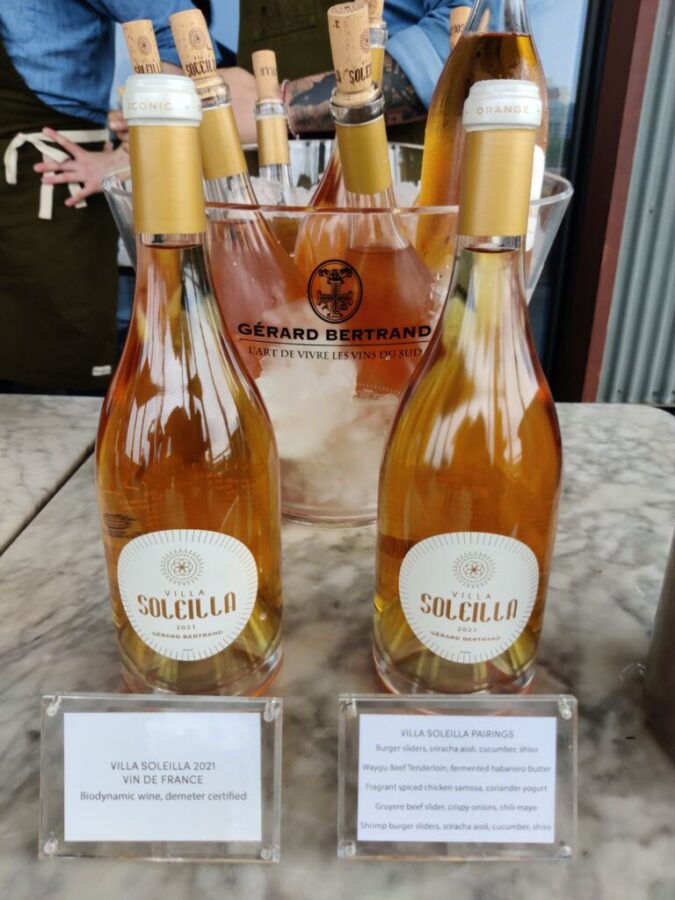
Naturae Orange, 2022, Vin de France (Demeter certified)
Blend of Chardonnay, Grenache Blanc, Viognier, and Muscat Bright orange hue, with gold reflections.
Great as an aperitif, and as a complement to vegetable tagines, fish curries, and aged cheeses.
Fresh and round, with candied white and yellow flower, and citrus fruit aromas, and floral, citrus fruit, and brioche notes.
Genora, 2021, Vin de France (Demeter certified)
Blend of Chardonnay, Roussanne, Grenache, and Muscat
Bright saturated orange hue. Great with cheese boards, and Indian and other Asian cuisines.
Crisp and soft, with white flower, candied fruit, and fresh pepper aromas, and acacia, and ripe lemon, orange, and apricot notes.
Orange Gold, 2021, Vin de France (Demeter certified)
Blend of Chardonnay, Grenache Blanc, Viognier, Marsanne, Muscat, and Mauzac Golden orange hue. Works well as an aperitif, or as a complement to cheese platters, and cumin-based dishes.
Fresh and well-balanced, with good structure and texture, floral and citrus fruit aromas, and white flower, candied citrus fruit, and white pepper notes.
Villa Soleilla, 2021, Vin de France (Demeter certified. This wine is an homage to traditional Georgian wine).
Sourced from the Chateau l’Hospitalet vineyards in Narbonne.
Blend of Roussanne, Marsanne, and Vermentino
Full and complex, with smooth tannins, garrigue, thyme, caramel, and honey aromas. and floral, citrus and orchard fruit, and sweet spice notes.
Pairs well with lamb tagine, roasted vegetables with sweet spices, and aged cheeses.

Be First to Comment